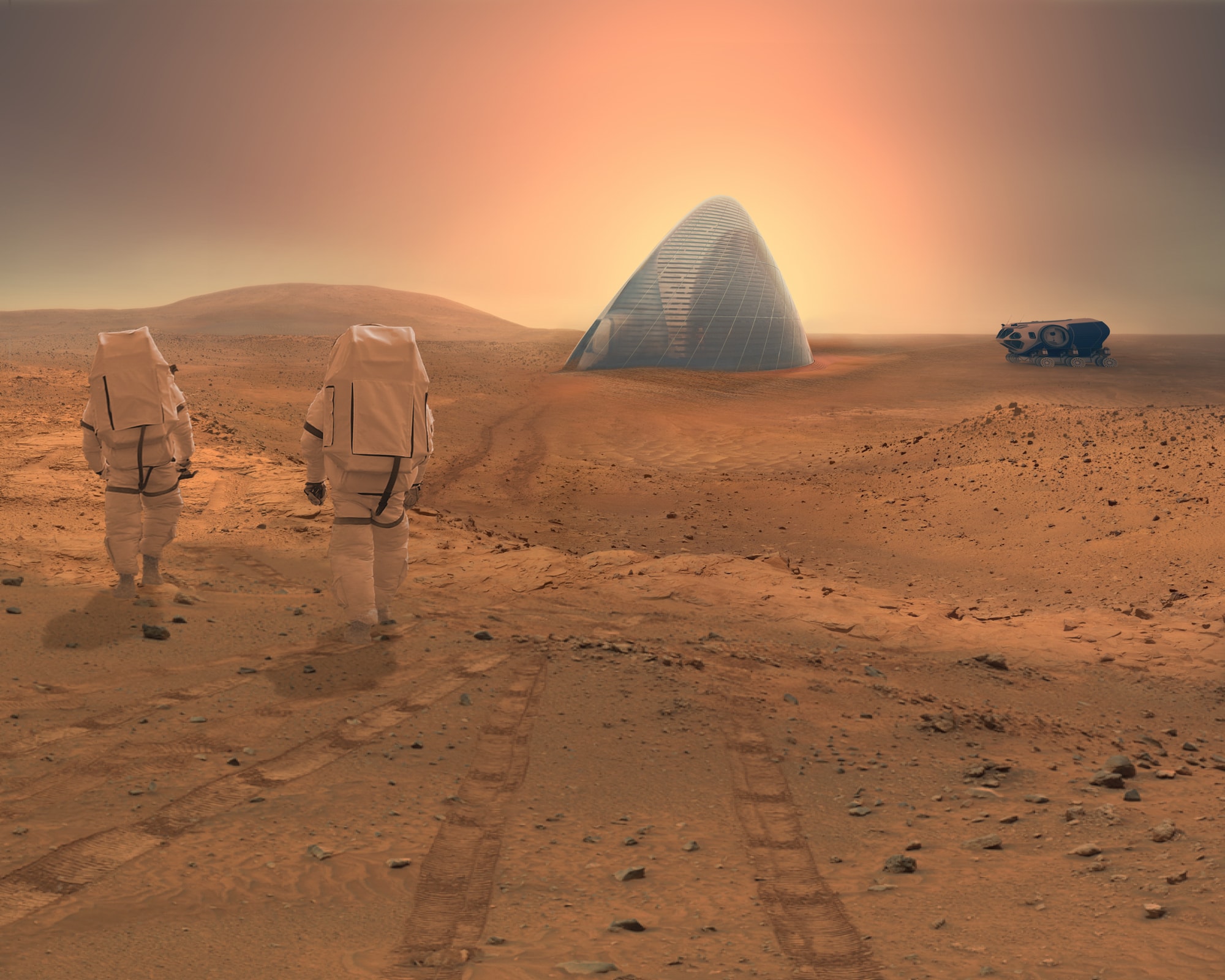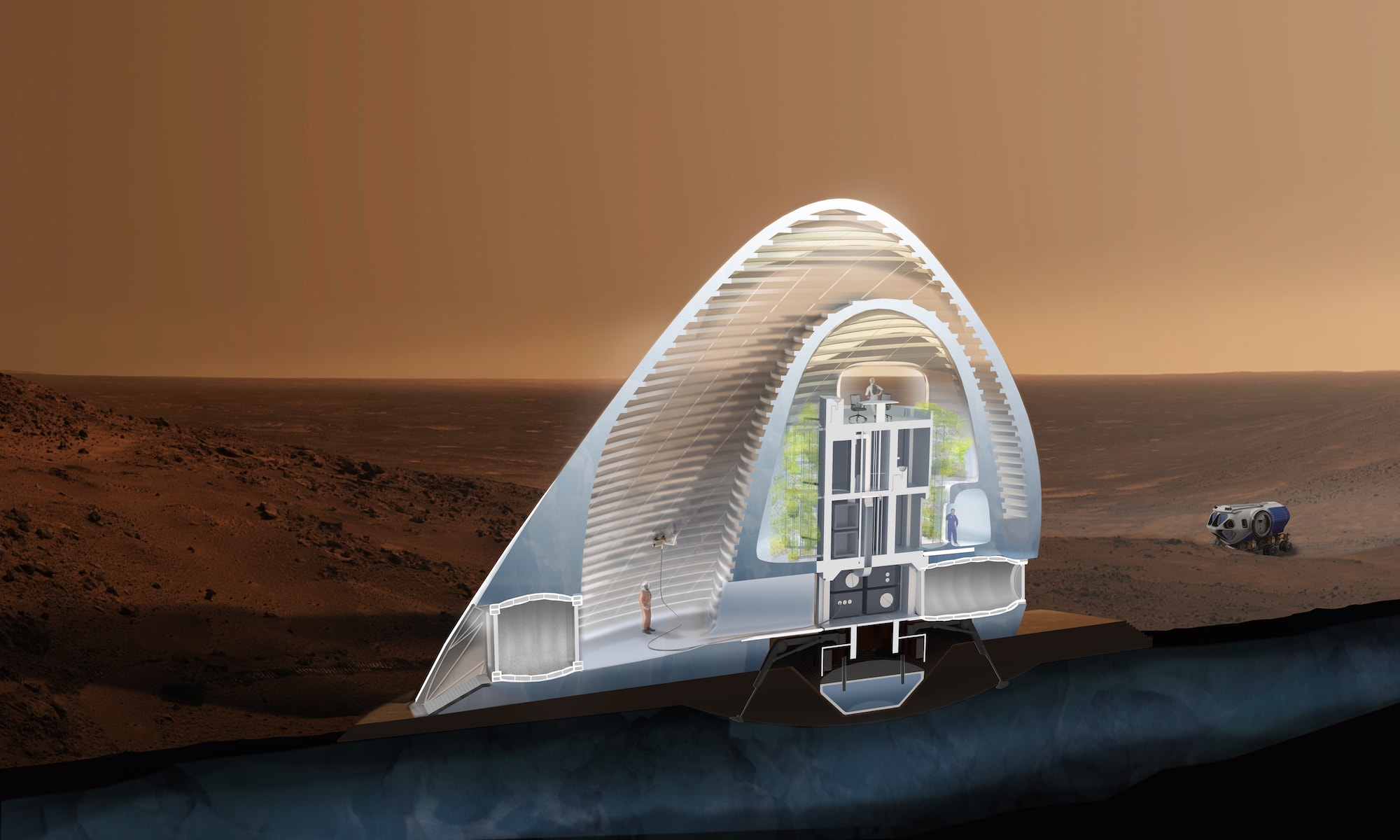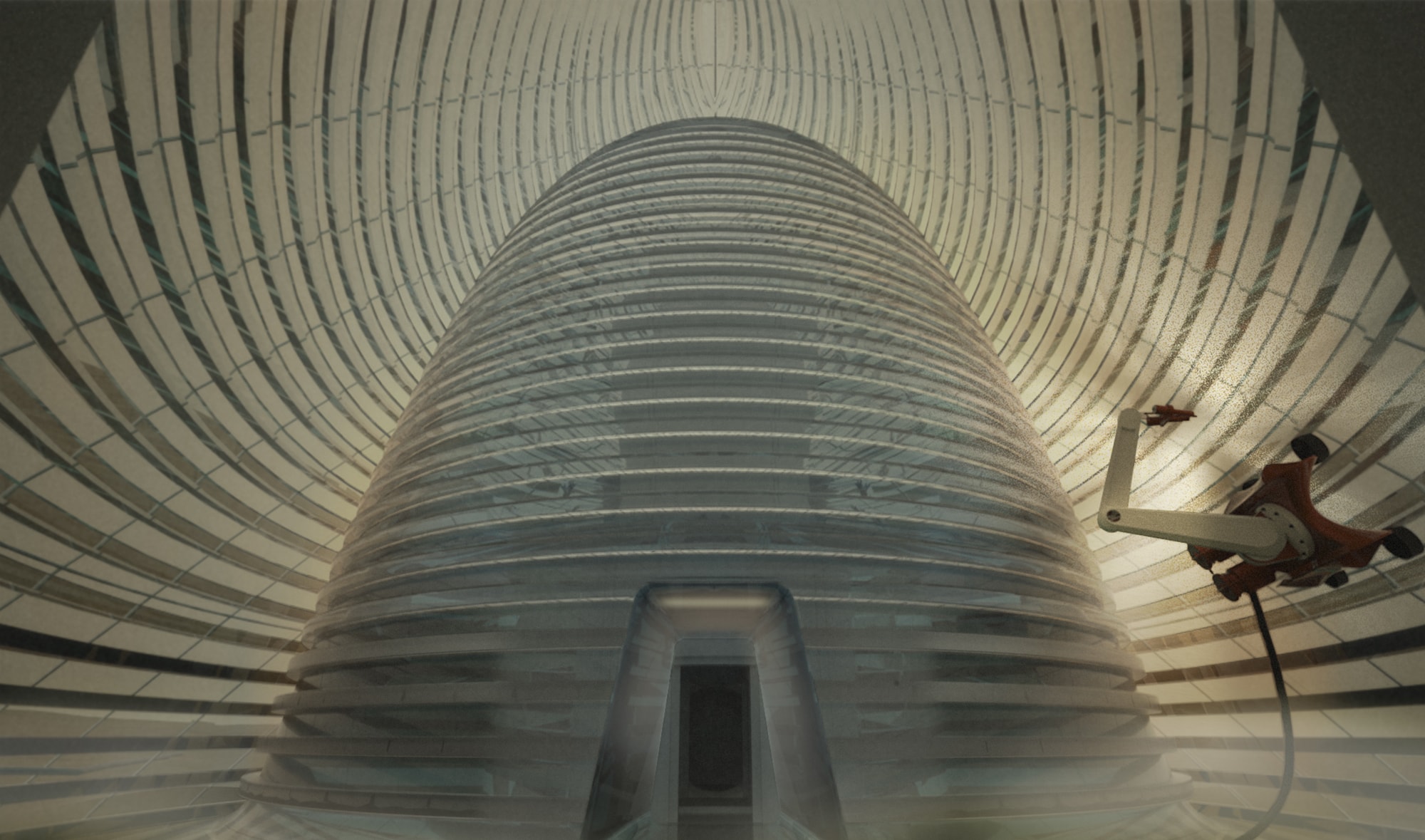Future Essentials from Extreme Environments, The Story Behind Mars Ice House
Speaker Interview – Melodie Yashar
Future Essentials from Extreme Environments
The Story Behind Mars Ice House
Mars Ice House and the Meaning of “Extreme Environments”
Our team developed Mars Ice House as an alternative approach to Martian habitats that employ regolith as a primary construction material, and in so doing frequently bury the habitat underground. Having explored numerous construction materials that could take advantage of ISRU (in-situ resource utilization) on the Martian surface, we concluded that mining water-ice was an essential and inevitable mission activity for a sustained human presence on Mars. In privileging a life above-ground as opposed to below, we sought to establish the critical importance of natural daylight in maintaining the astronauts’ circadian rhythms, and in providing views of the Martian landscape certify a sense of well-being and self-importance. Mars Ice House develops evidence-based principles of human factors design by establishing the critical importance of forming a connection to the greater ecological environment in long-duration space missions.
The design of “extreme” habitats requires a cognizant selection of the most critical values informing the most basic and essential needs of living (as opposed to merely surviving) in an environment fundamentally hostile to human presence. Extreme environments (such as Antarctica, deep sea, or outer space) demand the designer to distill the most essential and critical principles of spatial experience within a habitat already under substantial environmental constraints and requirements. Architecture in extreme environments identifies what is essential for humans to sustain life physiologically, psychologically, and emotionally over extended periods of time.

* A transparent exterior ETFE membrane prevents the 3d printed ice shells from sublimating into the Martian atmosphere. By Space Exploration Architecture / SEArch+ and Clouds Architecture Office.
The New Shift in Human Lifestyles
There is no question that humanist and evidence-based design approaches towards habitability must increasingly inform existing architectural typologies on Earth. A variety of user groups benefit from applied principles of human factors in the design of everyday, commonplace environments. Research has demonstrated time and again that a human factors approach towards environmental design holds radical implications for subject and staff well-being, stress reduction, and safety within architectural typologies such as educational, health-care, and even incarceration facilities.
But even with the recent emergence of the global ‘megalopolis’ and the exponential growth of network cities, the fact remains that every user and inhabitant experiences drastic reductions of public and private space. While urban expansion offers great benefits to vast numbers of people through enhanced infrastructural development as well as economic opportunity, I find it crucial that we demonstrate foresight to anticipate long-term effects and ramifications both environmentally and humanly. In particular, it is important that architectural construction and manufacturing industries undergo extensive reform in larger efforts to achieve fully sustainable or ‘cradle-to-cradle’ practices. From the humanist perspective, speculative interests in subterranean communities is just one of many architectural responses to the emergence of the megalopolis, whose long-term neuro-physiological effects must necessarily become a topic of further research.

Mars Ice House is 3d printed from translucent ice which shields the crew from radiation, and transforms into a glowing beacon in the Martian night. By Space Exploration Architecture / SEArch+ and Clouds Architecture Office.
Upcoming Changes in the Next 20 Years
I think wearable technologies and their integration with ‘smart’ or responsive environments will advance tremendously, both within private residences and public spaces. As rapid prototyping techniques become more and more accessible to everyday users, and particularly with new advancements in 3d printing, I think we can anticipate a resurgence in ‘grassroots’ local businesses providing competitive alternatives to mass-manufactured commercial goods. I also think that new social tools for community-making or community-sustaining initiatives will play a huge role in the near-future. As micro-apartment living becomes a new norm within high-density urban environments, my feeling is that social media will provide new ways of finding and developing meaningful experiences in shared public space.

Section Perspective: A double ice shell housing programmatic spaces within its layers is 3d printed around a lander habitat. A vertical greenhouse between the habitat and shell forms the crew's yard. By Space Exploration Architecture / SEArch+ and Clouds Architecture Office.
Key Agendas in the Upcoming Innovative City Forum Speech
Architectural proposals such as Mars Ice House are sometimes dismissed as speculative, out-of-reach or overly aspirational concepts for future habitation. But I would argue that Mars Ice House in particular embodies key ideological values to inform future living, both on Earth and extra-terrestrially. Lastly, I find it imperative that space travel initiatives to explore the reachable limits of our universe subsist despite the many limitations we will inevitably confront—both for the sake of the pursuit of science as well as the pioneering spirit of the human imagination.

A contemplative yard between the two ice shells serves as a buffer to prevent forward contamination of the Martian environment. By Space Exploration Architecture / SEArch+ and Clouds Architecture Office.
Melodie Yashar
Architect, Space Exploration Architecture / Assistant Professor, Pratt Institute
In 2015 Clouds AO and Space Exploration Architecture (SEArch) collaborated with a team of subject matter experts on a proposal for a pioneering Mars mission. Their proposal, "Mars Ice House," was awarded the top prize in NASA’s Centennial Challenge for a 3D Printed Habitat on Mars. The team, comprised of Christina Ciardullo, Kelsey Lents, Jeffrey Montes, Michael Morris, Ostap Rudakevych, Masayuki Sono, Yuko Sono and Melodie Yashar, is currently participating in the conceptual design of a Martian habitat made of ice at NASA's Langley Research Center.
Melodie Yashar is an architectural designer based in New York and a member of the design collective Space Exploration Architecture (SEArch)—a group building upon a 10-year portfolio of academic space research and practice in developing human-supporting concepts for space exploration. With a background in industrial design, Melodie co-teaches a joint industrial design and architecture studio at Pratt Institute as part of NASA's X-Hab (eXploration Habitat) Innovation Challenge for Human Centered Designs (2016), a NASA project collaboration to develop transit modules for Mars. Melodie is also co-founder of Sonic Platforms, an experimental media collective operating at the intersection of audiovisual art and the built environment, seeking to activate public engagement through the experience of sound and moving image.

